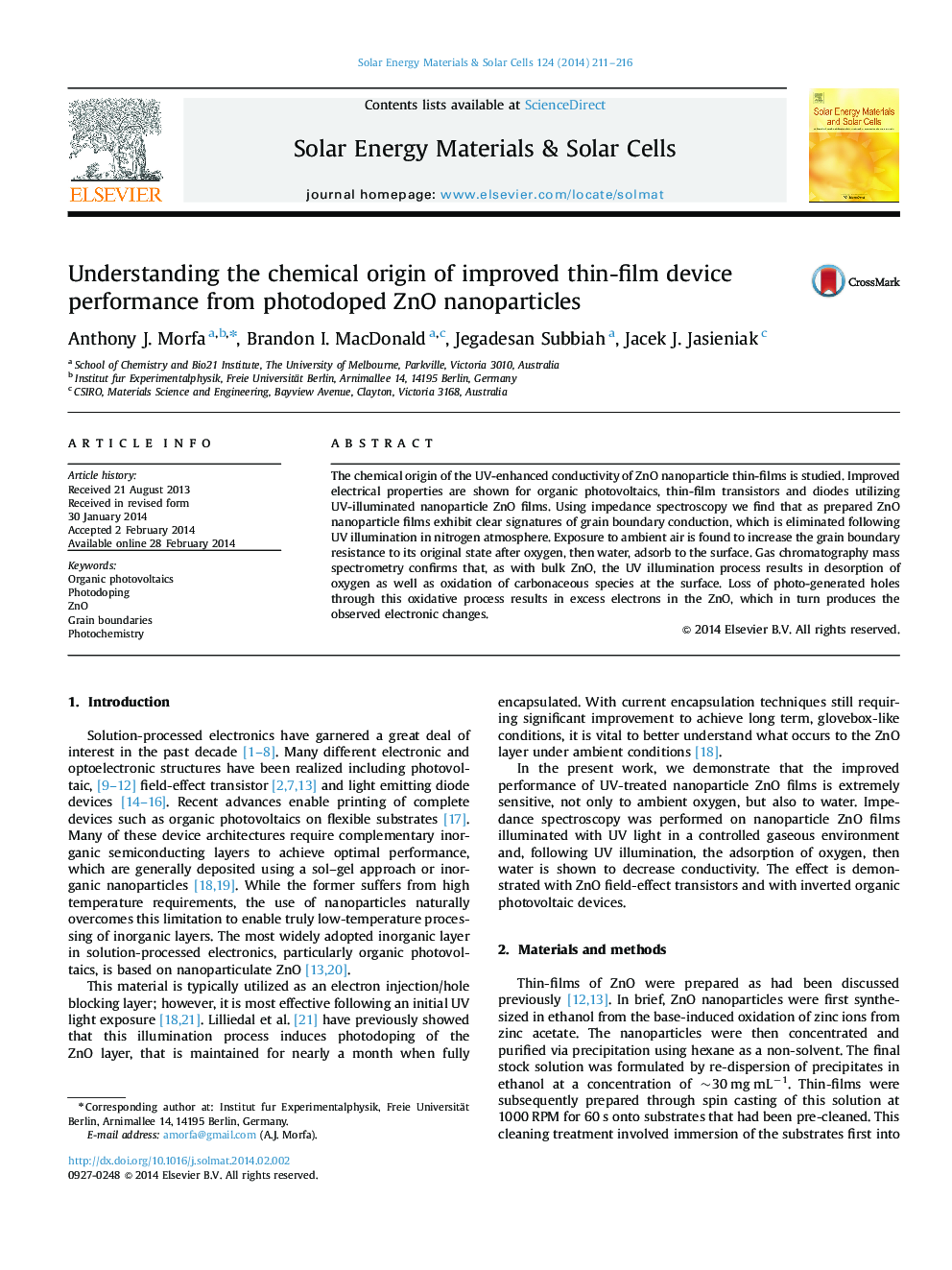| Article ID | Journal | Published Year | Pages | File Type |
|---|---|---|---|---|
| 6535765 | Solar Energy Materials and Solar Cells | 2014 | 6 Pages |
Abstract
The chemical origin of the UV-enhanced conductivity of ZnO nanoparticle thin-films is studied. Improved electrical properties are shown for organic photovoltaics, thin-film transistors and diodes utilizing UV-illuminated nanoparticle ZnO films. Using impedance spectroscopy we find that as prepared ZnO nanoparticle films exhibit clear signatures of grain boundary conduction, which is eliminated following UV illumination in nitrogen atmosphere. Exposure to ambient air is found to increase the grain boundary resistance to its original state after oxygen, then water, adsorb to the surface. Gas chromatography mass spectrometry confirms that, as with bulk ZnO, the UV illumination process results in desorption of oxygen as well as oxidation of carbonaceous species at the surface. Loss of photo-generated holes through this oxidative process results in excess electrons in the ZnO, which in turn produces the observed electronic changes.
Related Topics
Physical Sciences and Engineering
Chemical Engineering
Catalysis
Authors
Anthony J. Morfa, Brandon I. MacDonald, Jegadesan Subbiah, Jacek J. Jasieniak,
